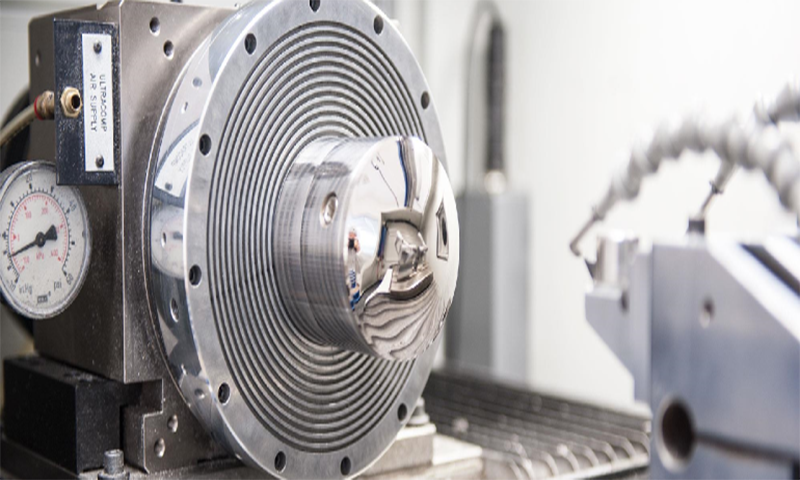Optical grinding is a precision machining process used to shape and finish optical components such as lenses, mirrors, and prisms to achieve the desired optical properties and surface quality. It involves the removal of material from the surface of the optical element using abrasive particles suspended in a fluid or paste. Here's an overview of the optical grinding process:
1. **Material Selection**: Choose a suitable optical material based on the requirements of the optical component, such as refractive index, transmission properties, and mechanical stability. Common optical materials include glass, ceramics, and crystals.

Diamond Turning
2. **Preparation**: Prepare the optical component for grinding by cleaning and inspecting it for surface defects, scratches, or other imperfections. Mount the component securely onto a workholding device or fixture to prevent movement during grinding.
3. **Grinding Machine Setup**: Set up the grinding machine with the appropriate grinding wheel, coolant system, and other accessories. The grinding wheel may be diamond or abrasive-based, depending on the material being ground and the desired surface finish.
4. **Grinding Process**: Begin the grinding process by bringing the grinding wheel into contact with the surface of the optical component. Apply a coolant or grinding fluid to lubricate the contact area and remove heat generated during grinding. Control the grinding parameters such as wheel speed, feed rate, and depth of cut to achieve the desired material removal rate and surface finish.
5. **Precision Control**: Use precision measurement tools such as profilometers, interferometers, or optical testing equipment to monitor and control the grinding process. Measure parameters such as surface roughness, form error, and surface figure to ensure the component meets the specified optical requirements.
6. **Iterative Grinding**: Optical grinding is often an iterative process, with multiple grinding and measurement cycles required to achieve the desired surface quality and optical performance. Adjust the grinding parameters and wheel geometry as needed based on the measurement results to optimize the process.
Diamond Turning
+Diamond turning is a process of mechanical machining of precision elements using lathes or derivative machine tools (e.g., turn-mills, rotary transfers) equipped with natural or synthetic diamond-tipped tool bits. The term single-point diamond turning (SPDT) is sometimes applied, although as with other lathe work, the "single-point" label is sometimes only nominal (radiused tool noses and contoured form tools being options). The process of diamond turning is widely used to manufacture high-quality aspheric optical elements fromcrystals, metals, acrylic, and other materials. Optical elements produced by the means of diamond turning are used in optical assemblies in telescopes, video projectors, missile guidance systems, lasers, scientific research instruments, and numerous other systems and devices. Most SPDT today is done with computer numerical control (CNC) machine tools. Diamonds also serve in other machining processes, such as milling, grinding, and honing.

Diamond Turning
7. **Polishing**: After grinding, the optical component may undergo polishing to further improve surface finish and optical quality. Polishing involves using progressively finer abrasive particles and polishing compounds to remove grinding marks and achieve a smooth, optically clear surface.
8. **Cleaning and Inspection**: Thoroughly clean the optical component to remove any residual grinding debris, coolant, or polishing compounds. Inspect the surface visually and with optical testing equipment to ensure it meets the specified requirements for optical performance.
9. **Quality Assurance**: Implement quality assurance measures throughout the grinding process to ensure the integrity and consistency of the finished optical components. Document process parameters, measurement results, and inspection records for traceability and quality control purposes.
Optical grinding requires precision equipment, skilled operators, and careful attention to detail to achieve the desired optical properties and surface quality. It is a critical step in the manufacturing of high-quality optical components used in a wide range of applications, including imaging systems, laser optics, and optical instrumentation.







